|
|
Also see Nest ID Matrix (contents) and Egg ID Matrix (color, spots, etc.)
To see other cavity nester bios/photos:
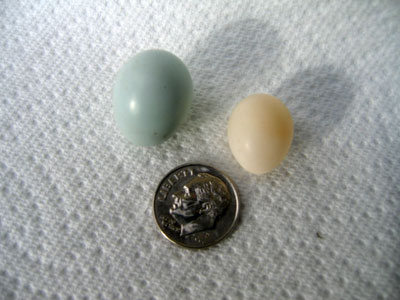 The Oak Titmouse (Baeolophus inornatus or OATI) egg relative to a Western Bluebird Egg and a dime. Photo by Larry Jordan of California. He had a blog at http://buildyourownbirdhouseplans.com/blog/ The Oak Titmouse (Baeolophus inornatus or OATI) egg relative to a Western Bluebird Egg and a dime. Photo by Larry Jordan of California. He had a blog at http://buildyourownbirdhouseplans.com/blog/
OATI’s are found in western woodlands. The eggs are white, smooth and non-glossy or slightly glossy. Some have tiny pale reddish-brown speckles evenly and sparingly scattered over the egg. |
|
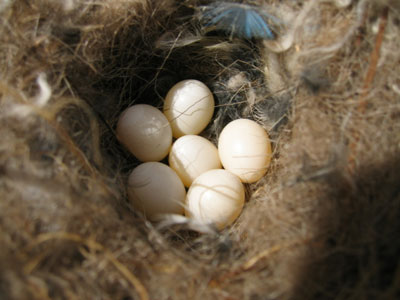 Oak Titmouse nest. Photo by Larry Jordan. Oak Titmouse nest. Photo by Larry Jordan.
Their nest is a base of moss, next fine grass, then a thick topping of fur or hair (e.g., rabbit, cow, horse, squirrel, skunk). They may also have shredded bark, straw, twigs, plant down or fibers, rope or string, oak blossoms, snakeskin, sycamore seed balls, rootlets, leaves or wood chips. About half have feathers. The cup is deep and usually is filled with a wad of fur as a “blanket” to cover eggs while the hen is laying. The nest is similar to that of a Juniper Titmouse,which may have more hair and shredded bark. |
|
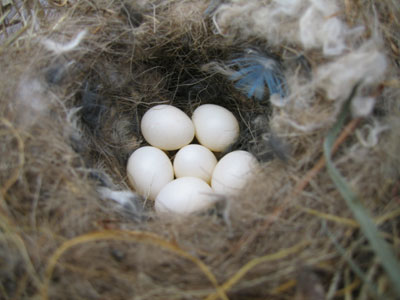 Oak Titmouse nest. Photo by Larry Jordan. Oak Titmouse nest. Photo by Larry Jordan.
OATIs have 3-9 eggs, with 6-7 being typical. |
|
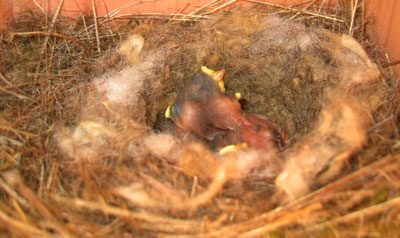 Newly hatched OATIs (day 0). Photo by Larry Jordan. Newly hatched OATIs (day 0). Photo by Larry Jordan. |
|
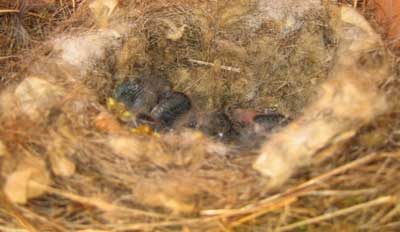 Same OATIs. Photo by Larry Jordan, taken around Day 4. Same OATIs. Photo by Larry Jordan, taken around Day 4. |
|
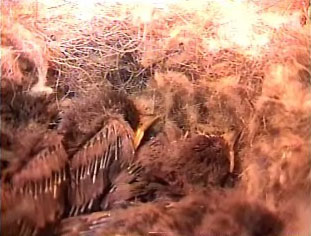 These OATI’s are about 1 week old. Photo by Larry Jordan. These OATI’s are about 1 week old. Photo by Larry Jordan. |
The student of Nature wonders the more and is astonished the less, the more conversant he becomes with her operations; but of all the perennial miracles she offers to his inspection, perhaps the most worthy of admiration is the development of a plant or of an animal from its embryo.
-Thomas Henry Huxley, British biologist and educator. Reflection #54, Aphorisms and Reflections, selected by Henrietta A. Huxley, Macmillan, 1907.
